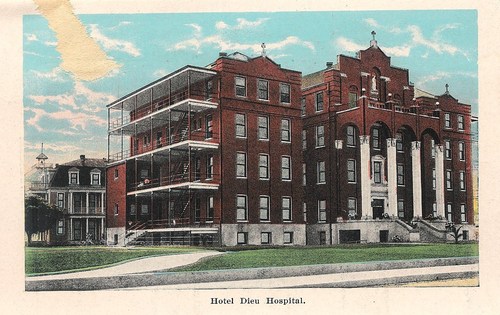.JPG)
By Judy Linsley
In 1918 an influenza pandemic killed as many as 50,000,000 people worldwide. More people died from it than died in World War I, which was winding down as the Spanish Flu, as it was known, hit its peak.
Spanish flu, so named because it was originally believed to have started in that country, actually probably originated at Camp Funston, Kansas, in the spring of 1918. From there it spread like wildfire, with an unheard-of mortality rate. The first wave was especially deadly, killing many thousands in large cities where it struck. Efforts to slow it were hampered by poor communication and governmental reluctance to distract the nation from its war work.
After the initial wave, the virus mutated into a slightly milder form, still dangerous and highly contagious. In early October 1918, this version struck Beaumont, where "a very malignant form" of smallpox was already causing problems.
On October 4 it was announced that Beaumont had 250 influenza cases. By October 8, thousands were ill, including 1200 students. Mayor Diffenbacher issued a proclamation closing all public places and prohibiting public gatherings until the epidemic ended. On the same day, the Spanish flu claimed its first Beaumont victim, a young woman.
After that, the shortage of doctors and nurses prevented an accurate count. The local Red Cross held crash courses in practical nursing. Patients were advised to go to bed with a "cold application," take aspirin and a purgative, and not get up too soon for fear of pneumonia, a principal cause of death. "Rest is the weapon with which to beat the flu," stated the city health officer.
On October 16, the newspaper reported "5000 cases of influenza in Beaumont," with 2000 already recovered and only nine deaths, "a remarkably light toll." Three days later, it reported that supplies of quinine and aspirin were "practically exhausted" in New Orleans and Houston, supply cities for Beaumont pharmacies.
The two companies of soldiers guarding Beaumont's refinery and shipyards had been quarantined before the general one was issued, but at least 57 fell ill; the Red Cross brought them bedding, pajamas, and gauze masks, while housewives brought them fresh buttermilk, fruit, jellies, and preserves.
The number of new cases finally dropped low enough to be counted again, and on November 3 the quarantine was lifted. Schools and public buildings were fumigated, disinfected, and ventilated.
The final official estimate, for the influenza epidemic was 20,000 cases-in a town of just under 40,000 people-with 75 fatalities. (It's not known whether pneumonia deaths were included.) The low mortality rate was attributed to the mild weather and Beaumonters' cooperation. Smallpox had a much higher percentage of deaths-7 in only 47 cases. Interestingly, the smallpox was restricted to the African American community, while nearly all of the influenza cases were white.
The lifting of the quarantine came just in time. On November 11, the Great War (World War I) ended, and Beaumonters were able to celebrate the armistice with impromptu parades downtown, without fear of contracting influenza.
